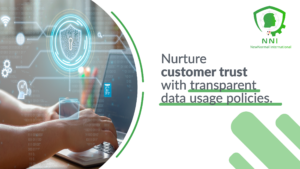Increase IT Security with Vulnerability Analysis
In the face of growing cyber threats, the need to Increase IT Security with Vulnerability Analysis has become paramount for business executives, mid-level managers, and entrepreneurs. This article will explore how integrating vulnerability analysis into IT security strategies can fortify an organization’s defenses, ensuring business success and sustainability.
Understanding the Role of Vulnerability Analysis in IT Security
Vulnerability analysis, fundamentally defined as the systematic review of security weaknesses in an information system, plays a pivotal role in the cybersecurity landscape. This process is critical in identifying and mitigating potential threats that could compromise the integrity and functionality of an organization’s digital infrastructure. Acting as a proactive measure, vulnerability analysis delves deep into the IT environment to uncover any weaknesses or flaws that could be potential entry points for cybercriminals. By conducting this thorough examination, organizations can anticipate and preemptively address security vulnerabilities, significantly reducing the risk of cyber attacks.
The scope of vulnerability analysis extends beyond mere identification; it involves assessing the severity of each weakness, understanding the potential impact on the system, and prioritizing the vulnerabilities based on their threat level. This prioritization is essential in allocating resources effectively, ensuring that the most critical vulnerabilities are addressed promptly. Furthermore, vulnerability analysis is not a one-time activity but a continuous process. As new threats emerge and technologies evolve, regular updates and reassessments are necessary to maintain a robust security posture. This ongoing process helps organizations stay ahead of attackers by continuously improving their defenses in line with the latest cybersecurity trends and threat intelligence.
Moreover, vulnerability analysis plays a crucial role in compliance and regulatory adherence. Many industries and governments mandate specific cybersecurity standards, and conducting regular vulnerability assessments can help organizations ensure they meet these requirements. Failing to comply can result in severe penalties, legal repercussions, and damage to reputation. Thus, vulnerability analysis is not only a strategic move for security but also a compliance necessity.
In summary, vulnerability analysis is an indispensable tool in the arsenal of IT security. By proactively identifying and addressing system weaknesses, organizations can significantly enhance their defense mechanisms against the ever-evolving landscape of cyber threats. This strategic approach not only safeguards critical data and systems but also fortifies the organization’s overall security framework, contributing to its long-term resilience and success in the digital realm.
Change Management for Implementing Vulnerability Analysis
Effective change management is essential when integrating vulnerability analysis into IT security protocols. Organizations must prepare their teams for new processes and technologies, ensuring smooth adoption and minimizing disruptions to operations.
Executive Coaching for Leading Security Initiatives
Executive coaching services can equip leaders with the necessary skills to effectively drive IT security initiatives, including vulnerability analysis. Leaders must understand the technical and strategic aspects of these initiatives to effectively manage their implementation and communicate their importance throughout the organization.
The Importance of Effective Communication in IT Security
Effective communication is vital in raising awareness about the importance of vulnerability analysis and ensuring compliance with security protocols. Clear, consistent communication helps in building a security-conscious culture within the organization.
Leveraging Generative AI in Vulnerability Analysis
Generative Artificial Intelligence (AI) can significantly enhance the process of vulnerability analysis. AI algorithms can rapidly identify and assess potential vulnerabilities, providing insights that human analysts might miss. This integration can lead to more comprehensive and effective IT security strategies.
Developing Leadership and Management Skills for Security Oversight
Developing robust leadership and management skills is crucial for overseeing effective vulnerability analysis processes. Training in risk assessment, cybersecurity trends, and strategic planning is essential for leaders and managers responsible for IT security.
Staying Informed with Business News and Updates in Cybersecurity
Keeping up-to-date with the latest developments in cybersecurity is essential for staying ahead of potential threats. Regularly reviewing business news and updates can provide valuable insights into emerging vulnerabilities and best practices in IT security.
Integrating Vulnerability Analysis into Project Management
Incorporating vulnerability analysis into project management ensures that IT security is a priority from the onset of any project. This proactive approach helps in identifying and addressing security risks early in the project lifecycle, thereby enhancing the overall security posture of the organization.
In conclusion, increasing IT security with vulnerability analysis is a strategic necessity in today’s digital landscape. By proactively identifying and mitigating vulnerabilities, businesses can protect their critical assets, maintain operational integrity, and build trust with stakeholders.
#ITSecurity #VulnerabilityAnalysis #Cybersecurity #RiskManagement #BusinessProtection























